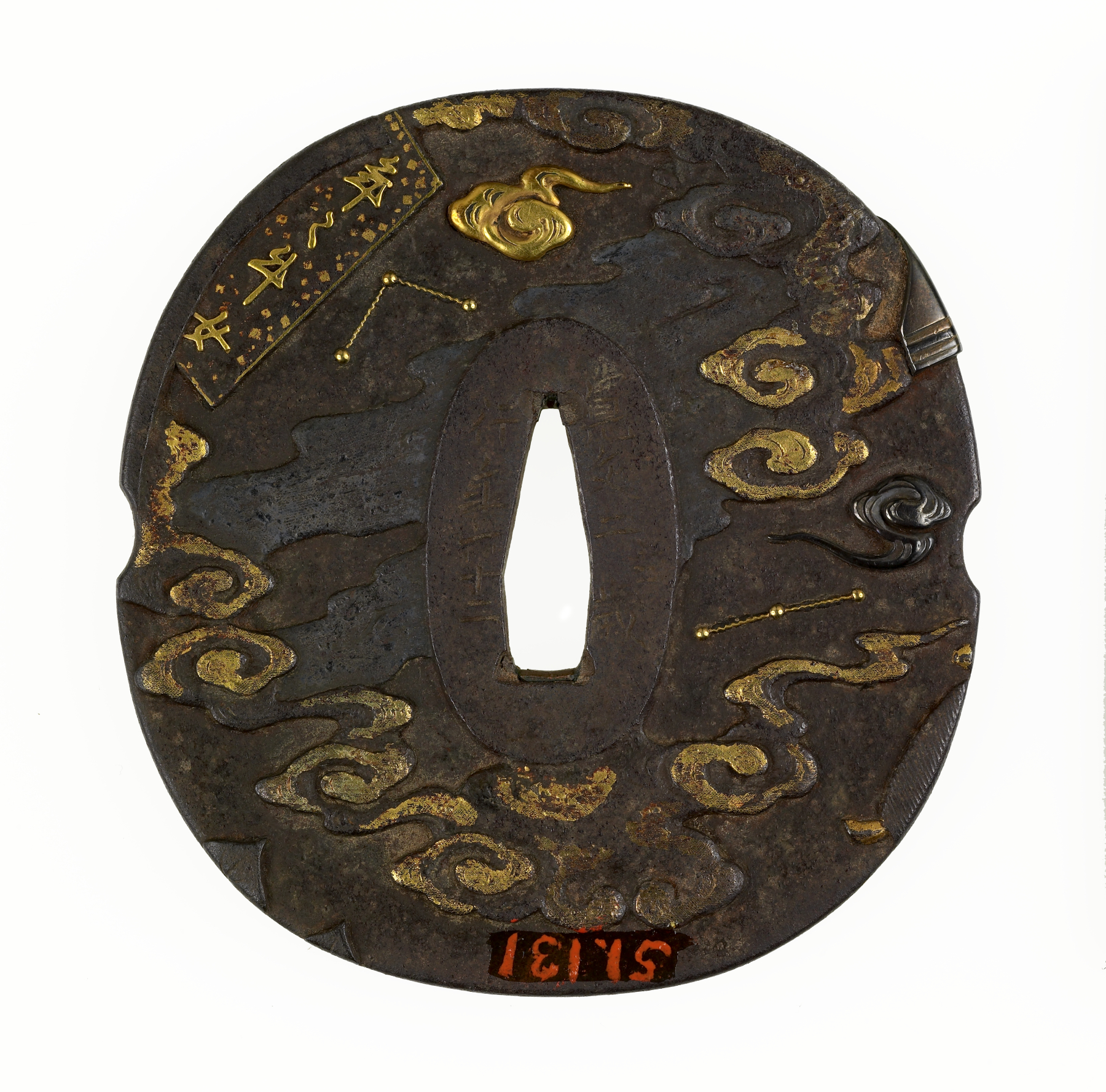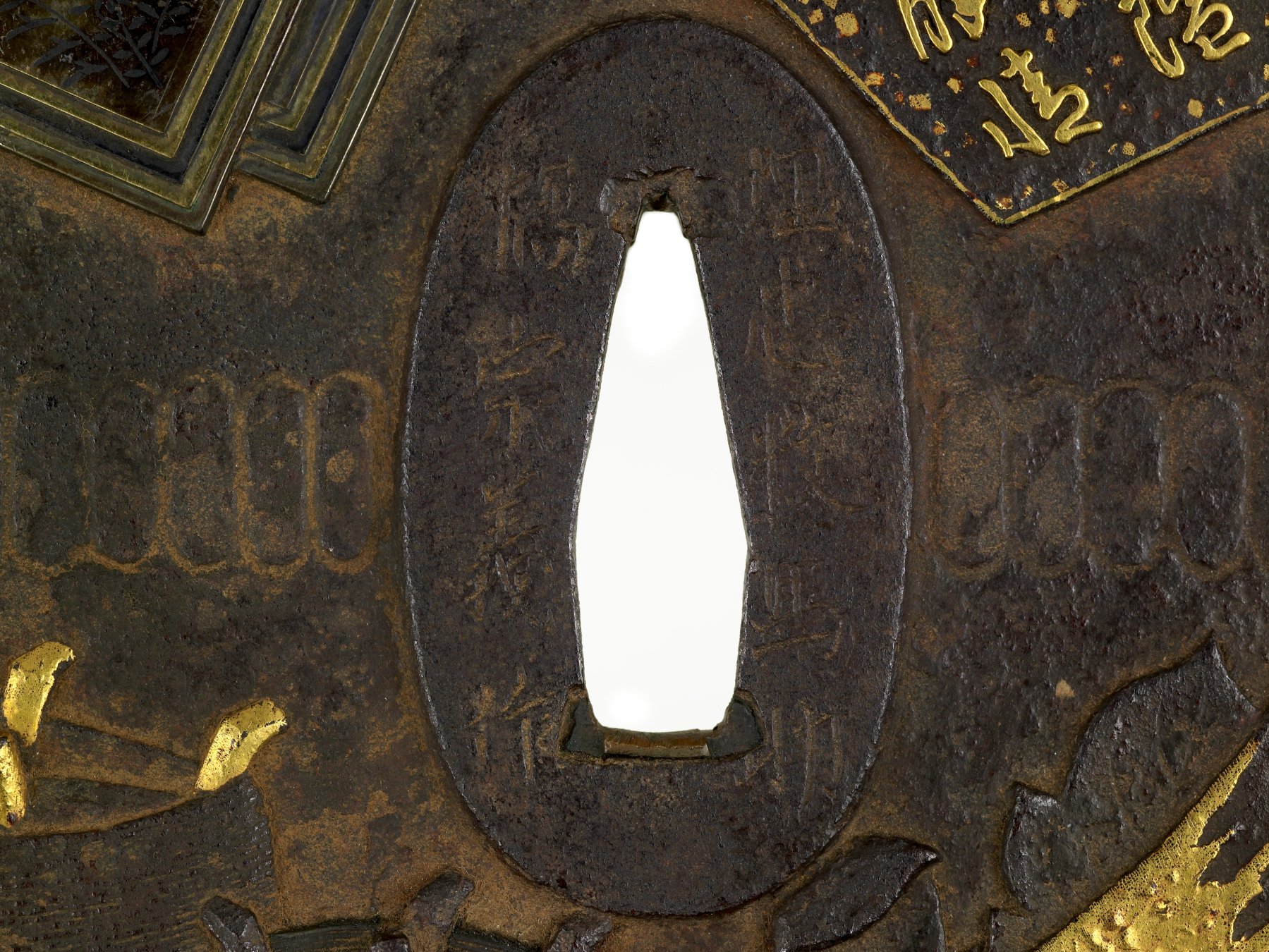Tsuba with Symbols of the Star Festival (Tanabata)
(Japanese Military Armor)
This tsuba refers to the story of the celestial lovers the Weaving Maiden (Jp. Orihime) and the Shepard (Jp. Hikoboshi). They are the stars Vega and Aquila. Because they neglected their work when they were together, the Weaving Maiden's father, the King of Heaven, decreed that they could only meet across the River of Heaven (i.e. the Milky Way) once a year. Their meeting is celebrated on the seventh day of the seventh month with a festival called Tanabata. The front of the tsuba shows objects associated with the story and celebrations of the festival. Along the lower edge are spools of thread used by the Weaving Maiden and maple leaves which form a bridge for the lovers to cross. Along the top and left edge are papers with poems. During the festival, celebrants write poems containing wishes and tie them to trees or bamboo poles. The back of the tsuba shows the stars and the Milky Way.
Inscription
Provenance
Provenance (from the French provenir, 'to come from/forth') is the chronology of the ownership, custody, or location of a historical object. Learn more about provenance at the Walters.
Henry Walters, Baltimore [date and mode of acquistion unknown]; Walters Art Museum, 1931, by bequest.
Geographies
Japan, Osaka
(Place of Origin)
Japan, Kyoto (Place of Origin)
Measurements
H: 3 1/4 x W above and below cutout: 3 1/16 in. (8.2 x 7.8 cm); W at cutout: 2 15/16 in. (7.5 cm)
Credit Line
Acquired by Henry Walters
Location in Museum
Not on view
Accession Number
In libraries, galleries, museums, and archives, an accession number is a unique identifier assigned to each object in the collection.
In libraries, galleries, museums, and archives, an accession number is a unique identifier assigned to each object in the collection.
51.131








